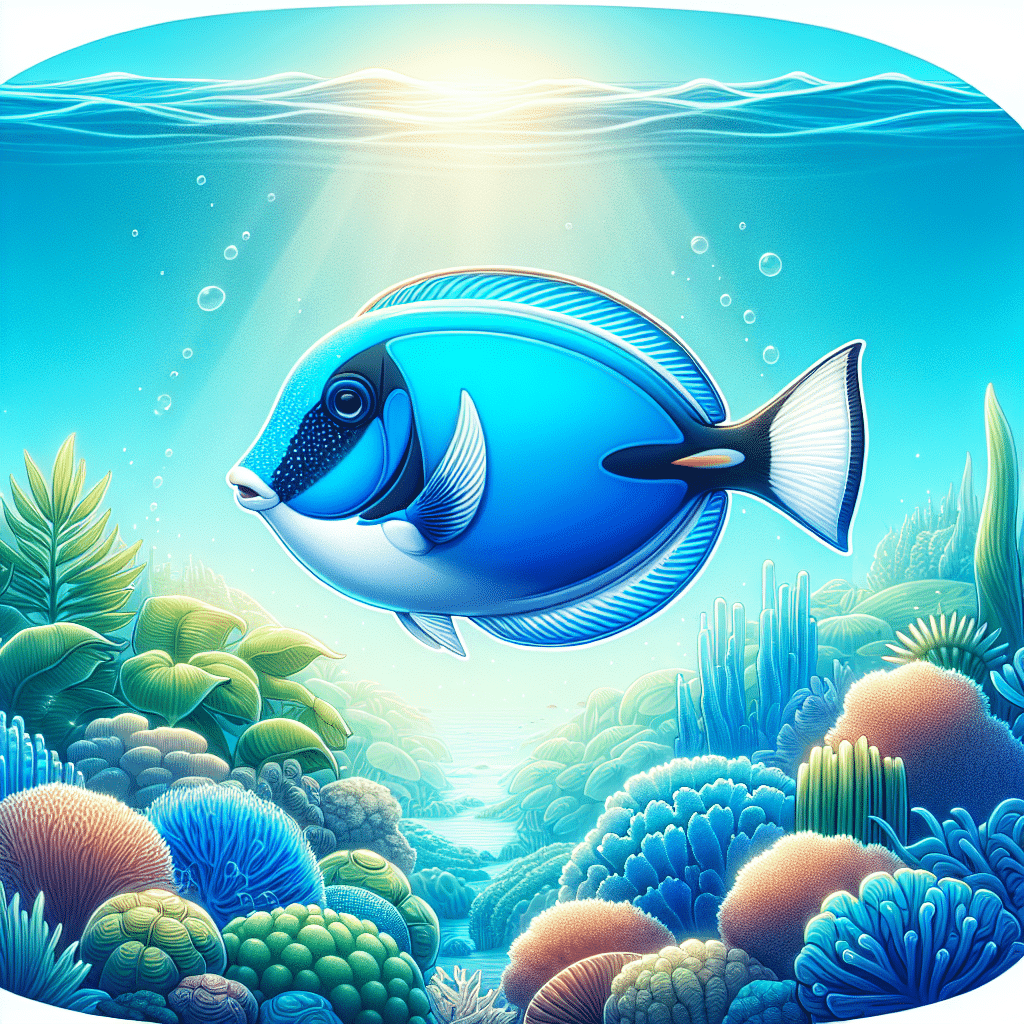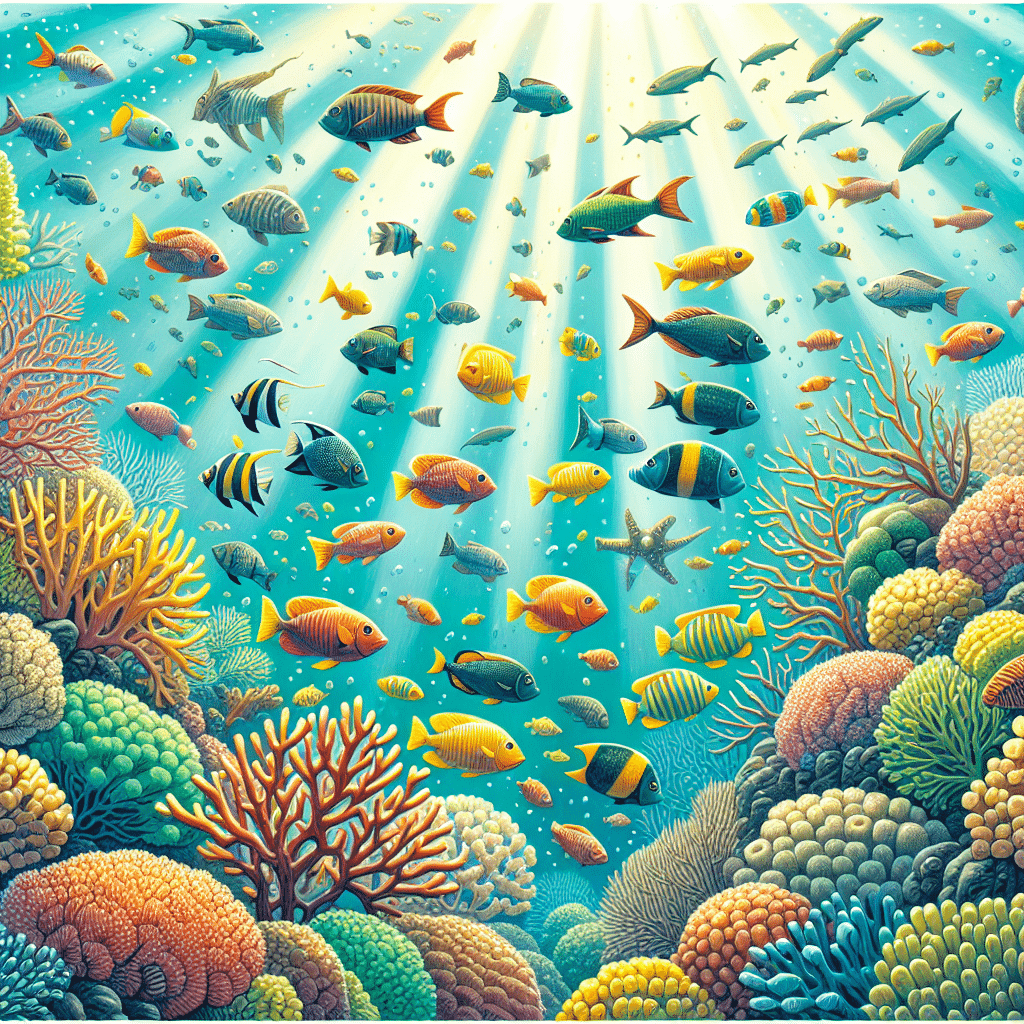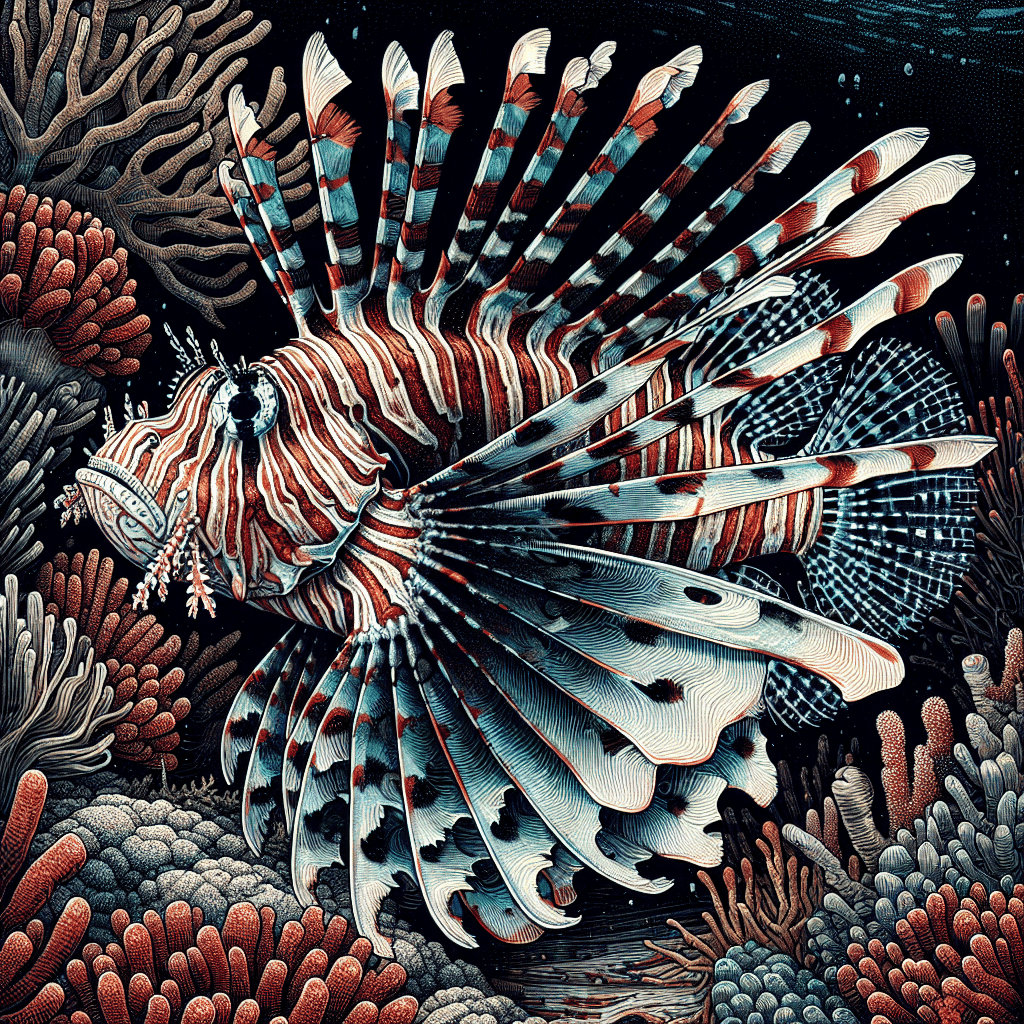Reef Tank Fish Care
Powder Blue Tang Overview
I find the powder blue tang, scientifically known as Acanthurus leucosternon, to be one of the most stunning fish in the reef tank hobby. This vibrant species can grow up to 23 cm (9 in) in length and features a unique oval body shape that is compressed laterally. Its striking blue sides, combined with a yellow dorsal fin and crescent-shaped caudal fin, make it a standout in any aquarium. The head is black, while the mouth, throat area, and the anal and pelvic fins are white. The pectoral fins are transparent with yellow reflections. An interesting aspect of this fish is that the intensity of its blue color can indicate its health status.
The powder blue tang is often confused with the blue tang, but they are different species. Unlike the blue tang, which is more commonly referred to as Paracanthurus hepatus, the powder blue tang has its own distinct characteristics (Oceana).
These fish are herbivorous and primarily feed on benthic algae. They are typically diurnal and can exhibit solitary or territorial behavior. However, they may also be seen in shoals when food is plentiful. The powder blue tang is known for its aggressive tendencies, especially toward other surgeonfish, and it possesses a “surgeon’s scalpel” at the base of its tail, which it can use as a defensive weapon.
One of the fascinating aspects of the powder blue tang is its tendency to form monogamous pairs (Georgia Aquarium). This social structure can provide insight into their behavior and care requirements in a reef tank setting.
For anyone interested in adding this beautiful fish to their aquarium, it’s crucial to consider its tank mates and feeding habits. I recommend pairing it with compatible marine species, such as clownfish or butterfly fish, to create a harmonious environment. With proper care, the powder blue tang can thrive and become a highlight of your reef tank.
Setting Up Your Tank
Setting up a tank for a powder blue tang can be quite an exciting challenge. This beautiful fish, known scientifically as Acanthurus leucosternon, has specific needs that I need to consider to ensure its happiness and health.
Tank Size Requirements
When it comes to tank size, the powder blue tang needs plenty of space. I’ve learned that the recommended tank size for this fish is at least 6 feet in length, which equates to about a 180-gallon tank (Reef2Reef). This size allows them to swim freely and helps reduce stress, which is crucial for their well-being. Here’s a quick overview of tank size recommendations for different tangs:
| Tang Type | Minimum Tank Size |
|---|---|
| Powder Blue Tang | 180 gallons (6 ft) |
| Blue Tang | 100 gallons (4 ft) |
| Sailfin Tang | 125 gallons (5 ft) |
Water Parameters for Success
Getting the water parameters right is incredibly important for the powder blue tang. I’ve found that they thrive in a stable environment. Here’s what I need to keep in mind:
| Parameter | Ideal Range |
|---|---|
| Temperature | 75°F to 80°F (24°C to 27°C) |
| Salinity | 1.020 to 1.025 |
| pH | 8.1 to 8.4 |
| Ammonia | 0 ppm |
| Nitrite | 0 ppm |
| Nitrate | < 20 ppm |
Maintaining these parameters helps in mimicking their natural habitat, which is essential for their health. The powder blue tang is typically found in tropical waters of the Indian Ocean, where they inhabit shallow and clear coastal waters associated with reefs (Wikipedia). With the right setup, I can create a thriving environment for my tang and enjoy watching it flourish in my reef tank.
For more info on marine fish and their care, check out our section on marine fish.
Diet and Feeding
Herbivorous Behavior
The powder blue tang, scientifically known as Acanthurus leucosternon, is primarily herbivorous. These fish actively browse the surface of coral reefs, searching for their favorite algae. They can often be seen swimming in groups, covering long distances as they graze along the reef throughout the day. This behavior is crucial not just for their diet, but also for the health of the reef. By consuming algae, they help control its growth, preventing it from suffocating corals (Oceana, Florida Museum).
Best Feeding Practices
When it comes to feeding my powder blue tang, I focus on providing a varied diet that mimics their natural herbivorous behavior. Here are some recommended feeding practices:
| Food Type | Frequency | Notes |
|---|---|---|
| High-quality marine algae | Daily | Nori sheets are a great option. |
| Spirulina flakes or pellets | Daily | Ensure they are high in fiber. |
| Fresh greens (e.g., lettuce) | 2-3 times a week | Rinse before adding to avoid chemicals. |
| Prepared herbivore formulas | 2-3 times a week | Look for options specifically for tangs. |
It’s important to feed small amounts multiple times a day rather than one large feeding. This helps simulate their natural foraging behavior and keeps their metabolism healthy. Always ensure that any uneaten food is removed to maintain water quality.
Additionally, my powder blue tang may display territorial behavior, especially with other surgeonfish. Therefore, I make sure to monitor their interactions during feeding times and provide ample space in the tank. For more insights on care techniques, check out our article on marine fish to learn about compatible species and overall tank management.
Behavior and Socialization
Monogamous Pairs
I’ve found that the powder blue tang, scientifically known as Acanthurus leucosternon, tends to form monogamous pairs. This characteristic is quite fascinating, as it’s not commonly seen in many fish species. Pair bonding can be beneficial for breeding and can enhance their social interactions. Having a partner allows these fish to establish a territory together, making them feel more secure in their environment. If you’re considering adding a pair to your reef tank, keep in mind that they thrive better when they have a companion.
Interaction with Other Fish
The powder blue tang is known for its unique personality when interacting with other fish in the tank. They can be territorial and often display aggressive behaviors, especially towards other surgeonfish. It’s essential to carefully choose tank mates to ensure a harmonious environment. While they can sometimes tolerate other species, it’s best to avoid keeping them with fish that have similar body shapes or colors, as this can trigger aggression.
In cases where food is plentiful, these tangs may feed in groups, which can be a sight to behold. However, during food scarcity, they will typically compete individually. To promote a peaceful coexistence in your tank, consider adding species like clownfish or wrasses, which are generally more compatible.
Here’s a brief overview of their interactions:
| Behavior | Description |
|---|---|
| Territorial | Defends their space, particularly against similar species. |
| Aggressive | May show aggression towards other surgeonfish. |
| Social Feeding | Can feed in groups when food is abundant. |
By understanding their behavior and social needs, I can create a more balanced and thriving reef environment. For those interested in pairing them with other marine fish, I recommend checking out my article on marine fish for more insights on compatibility.
Reproduction and Life Cycle
Broadcast Spawning
When it comes to reproduction, the powder blue tang follows a fascinating method known as broadcast spawning. In this process, multiple females release their eggs, while several males simultaneously release sperm into the water column above the reef. This synchronized release significantly increases the chances of successful fertilization and helps protect the fertilized eggs from predators lurking near the reef surface. It’s a pretty neat strategy to ensure that enough eggs survive, especially given the dangers they face in their natural habitat (Oceana, Florida Museum).
Juvenile to Adult Transformation
The transformation from juvenile to adult is a crucial phase in the life cycle of the powder blue tang. Juveniles typically appear different from their adult counterparts. They start with a more muted coloration, often featuring a unique pattern to help them blend into their surroundings. As they grow, they undergo a dramatic change in appearance, developing the vibrant blue and yellow hues that make them so popular among aquarium enthusiasts.
During this transformation, the juvenile powder blue tang also becomes more social and begins to establish its place in the reef community. This transition involves not just changes in coloration but also in behavior and interaction with other fish. As they mature, they become more dominant within their social hierarchy, which is essential for their survival in the competitive reef environment.
For more information on different fish species, check out my articles on marine fish and other related species like tangs and clownfish.
Color Variations and Features
Juvenile Appearance
The juvenile powder blue tang is truly a sight to behold. When they are young, these fish are bright yellow, making them stand out in any aquarium. This vibrant color is not just for show; it plays a role in their survival as they navigate through reefs. Unfortunately, these strikingly colored juveniles are often targeted for the private aquarium trade, which can impact their populations in the wild (Oceana).
| Age Stage | Color |
|---|---|
| Juvenile | Bright Yellow |
Adult Coloration Details
As the powder blue tang matures, its coloration transforms dramatically. Adult blue tangs exhibit a solid blue or deep purplish-blue hue, which is almost dark purple in certain light. The transition to this adult coloration is not dependent on the size of the fish, but rather on its age. Adult powder blue tangs also have a distinctive yellow caudal spine and features like a black head and white fins. The intensity of their blue color is a good indicator of their health.
| Age Stage | Color |
|---|---|
| Adult | Solid Blue to Deep Purplish-Blue |
The powder blue tang can reach an average size of 23 cm (9 inches) and has a unique body shape. With a crescent-shaped caudal fin and an oval, laterally compressed body, these fish are not only beautiful but also fascinating to observe in a reef tank environment. For more information on keeping different types of fish, take a look at our articles on marine fish or explore specific species like the regal tang and yellow tang.
Habitat and Distribution
Natural Environment
The powder blue tang, known scientifically as Acanthurus leucosternon, thrives in tropical waters of the Indian Ocean. I find it fascinating that these vibrant fish inhabit shallow and clear coastal waters associated with reefs. They prefer environments like flat top reefs and areas along seaward slopes, which provide abundant food sources and shelter. Understanding their natural habitat helps me create a more suitable environment in my own reef tank.
| Habitat Type | Description |
|---|---|
| Coastal Waters | Shallow, clear waters near reefs |
| Reef Type | Flat top reefs and seaward slopes |
| Food Source | Benthic algae and other reef plants |
Preferred Reef Locations
In the wild, powder blue tangs are quite social and can often be found swimming in large groups. They actively browse the surface of coral reefs, searching for their favorite algae. This behavior is not only entertaining to observe but also plays a crucial role in maintaining the health of coral reefs. By consuming algae that can overcrowd and suffocate corals, they help keep the ecosystem balanced (Oceana).
These fish can be found in various locations, including:
- Western Indian Ocean: Commonly seen around Mauritius, Seychelles, and Madagascar.
- Reef Systems: Favored in coral-rich environments where they can find ample algae to eat.
When setting up my own reef tank, I take inspiration from their natural habitat. I ensure my aquarium mimics the shallow coastal waters and incorporates plenty of live rock and algae to create a thriving environment for my powder blue tang. For anyone interested in keeping this beautiful fish, it’s essential to understand their habitat and dietary needs to provide the best care possible.
Health and Maintenance
Taking care of my powder blue tang, Acanthurus leucosternon, means being aware of common health concerns and ensuring compatibility with other fish in the tank. Here’s what I’ve learned from my experiences.
Common Health Concerns
The powder blue tang is prone to certain health issues, most notably Cryptocaryon irritans, also known as marine ich. This parasite can cause significant stress and health problems if not addressed promptly. It’s essential to monitor the fish regularly for signs of illness, such as white spots on the skin or changes in behavior.
| Health Concern | Symptoms | Prevention/Treatment |
|---|---|---|
| Marine Ich | White spots on skin | Quarantine new fish; use medications |
| Fin Rot | Frayed or discolored fins | Maintain water quality; treat with medication |
| Stress-related Issues | Hiding, loss of appetite | Provide hiding spots; maintain stable tank conditions |
This table summarizes common health issues and how to manage them. Regular water testing and maintaining optimal conditions are key to keeping my powder blue tang healthy.
Compatibility with Other Fish
When stocking a reef tank with a powder blue tang, compatibility is crucial. This fish generally gets along well with most species, but it can be territorial, especially with other surgeonfish. I’ve found that keeping them with peaceful community fish works best.
Here’s a quick reference for compatibility:
| Fish Type | Compatibility |
|---|---|
| Clownfish | Good |
| Butterfly Fish | Good |
| Other Acanthurus Species | Poor |
| Triggerfish | Moderate |
| Pufferfish | Poor |
| Wrasse | Good |
Avoid keeping multiple Acanthurus species together, as they can become aggressive. Choosing the right tank mates ensures a harmonious environment, allowing my powder blue tang to thrive among its companions. If you’re interested in learning more about other marine species, check out our articles on marine fish and tang.
Aquarium Trade and Conservation
Availability in the Trade
The powder blue tang, scientifically known as Acanthurus leucosternon, is commonly sold in the marine aquarium industry. While it is moderately difficult to care for, its popularity is somewhat overshadowed by other tangs like the regal tang and yellow tang. It is important to note that this species is rarely harvested for purposes other than the aquarium trade. The fish typically reaches an average size of 23 cm (9 inches) and has a distinctive appearance that makes it appealing to many hobbyists.
| Species Name | Common Name | Average Size (cm) | Availability |
|---|---|---|---|
| Acanthurus leucosternon | Powder Blue Tang | 23 | Common |

Conservation Status and Concerns
In terms of conservation, the powder blue tang is currently not listed as endangered. However, sustainable practices are crucial when sourcing these fish for aquariums. As a fish keeper, I always try to ensure that I purchase from reputable suppliers who follow ethical harvesting practices. This helps preserve their populations in the wild, especially since they are susceptible to diseases like Cryptocaryon irritans and can be affected by habitat loss in their natural environments.
The powder blue tang is primarily found in tropical waters of the Indian Ocean, inhabiting shallow reefs. Given their reliance on healthy coral reef ecosystems, the conservation of these habitats is essential for maintaining their populations. Awareness of the impact of overfishing and habitat destruction is vital for the future of this stunning fish.
For those interested in keeping marine fish, including tangs, it’s beneficial to read up on related species like the blue tang or yellow tang to enhance your knowledge and make informed decisions about your aquarium setup.


